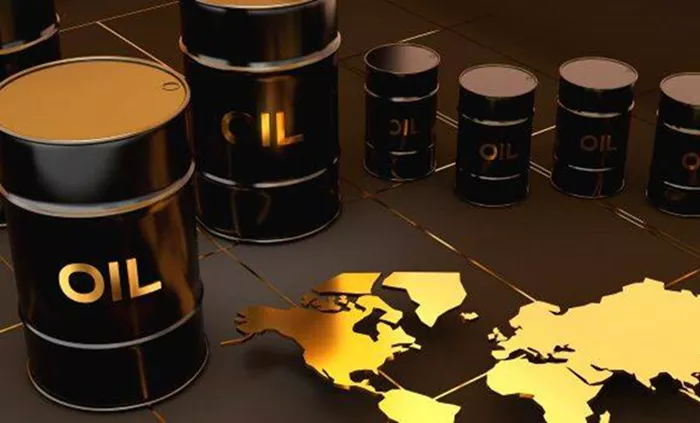The price of one barrel of crude oil is highly variable and can change frequently due to a myriad of factors including market demand, geopolitical stability, production levels, and economic conditions. As of mid-2023, the price of a barrel of crude oil has typically ranged from $60 to $100.
Factors Influencing Crude Oil Prices
Supply and Demand
Production Levels: The amount of oil produced by key players like OPEC (Organization of the Petroleum Exporting Countries), the United States, and Russia directly impacts prices. Increased production can lead to lower prices, while reduced output can drive prices up. For instance, if OPEC decides to cut production to reduce supply, the price of oil might increase due to the reduced availability of crude oil on the market.
Global Demand: Economic growth in major economies, particularly in countries like China and India, can increase demand for crude oil, pushing prices higher. Conversely, economic slowdowns can reduce demand and lower prices. For example, during periods of economic expansion, industrial activities and transportation needs rise, leading to higher oil consumption and elevated prices.
Geopolitical Events
Political Instability: Events such as wars, political unrest, and sanctions in oil-producing regions can disrupt supply and cause prices to spike. For example, tensions in the Middle East, a major oil-producing region, can lead to fears of supply disruptions, which can drive prices up.
OPEC Decisions: OPEC’s decisions on production quotas can have significant impacts on global oil prices. For instance, agreements among OPEC members to cut or increase production levels directly influence the amount of oil available on the global market, affecting prices accordingly.
See also: Why Did Crude Oil Prices Fall In 2008?
Market Speculation
Trader Sentiment: Market speculation and the trading activities of hedge funds and other financial entities can influence short-term price movements. Traders’ perceptions of future supply and demand conditions, based on economic indicators or geopolitical developments, can lead to speculative buying or selling, impacting prices.
Futures Contracts: The prices of oil futures contracts, which are agreements to buy or sell oil at a predetermined price at a future date, also affect current oil prices. Futures trading allows market participants to hedge against price volatility, but it can also lead to price fluctuations based on traders’ expectations of future market conditions.
Technological and Environmental Factors
Advancements in Extraction Technologies: Innovations like fracking have increased oil supply, impacting prices. Fracking has enabled the extraction of oil from previously inaccessible reserves, particularly in the United States, significantly boosting supply and influencing global prices.
Environmental Policies: Regulations aimed at reducing carbon emissions and promoting renewable energy can affect long-term demand for crude oil. As countries implement policies to transition towards cleaner energy sources, the demand for fossil fuels like crude oil may decrease, potentially leading to lower prices over time.
Currency Fluctuations
USD Strength: Since oil is traded globally in U.S. dollars, fluctuations in the value of the dollar can influence oil prices. A stronger dollar makes oil more expensive for buyers using other currencies, potentially reducing demand and lowering prices. Conversely, a weaker dollar can make oil cheaper for foreign buyers, boosting demand and driving prices up.
Historical Context and Price Trends
Historically, crude oil prices have seen significant volatility. For instance, during the 2008 financial crisis, prices dropped dramatically due to reduced demand. In contrast, prices surged during periods of political instability in the Middle East, such as during the Gulf War. These historical trends highlight how sensitive crude oil prices are to changes in economic conditions and geopolitical events.
See also: How Many Gallons Of Gas Does 1 Barrel Of Crude Oil Make?
Recent Trends
In recent years, the COVID-19 pandemic caused unprecedented fluctuations in oil prices. In early 2020, prices plummeted as global demand collapsed due to lockdowns and travel restrictions. However, as economies started to recover and travel resumed, prices began to rise again. As of 2023, prices have been influenced by factors such as:
Economic Recovery: Post-pandemic economic recovery driving up demand. As businesses reopened and economic activities resumed, the increased demand for oil has pushed prices higher.
OPEC+ Production Cuts: Efforts by OPEC and its allies to manage supply. By coordinating production cuts, OPEC+ has aimed to stabilize the market and support higher prices amidst fluctuating demand.
Geopolitical Tensions: Conflicts and sanctions affecting oil-producing regions. Ongoing geopolitical issues, such as sanctions on Iran and conflicts in other oil-rich regions, have contributed to supply uncertainties and price volatility.
Current Price Check
To get the current price of a barrel of crude oil, you can check reputable financial news websites, commodity trading platforms, or economic news sections of major news outlets. Websites like Bloomberg, Reuters, and the Energy Information Administration (EIA) regularly update oil prices. These sources provide real-time data and analysis, helping you stay informed about the latest market developments and price trends.
Conclusion
The price of crude oil is subject to a complex interplay of factors including supply and demand dynamics, geopolitical events, market speculation, technological advancements, environmental policies, and currency fluctuations. Understanding these factors can help in making informed decisions related to oil consumption, investment, and economic planning.
For the most accurate and timely information, always refer to real-time data sources. Keeping abreast of these factors is crucial for stakeholders across various sectors, from policymakers and investors to consumers and businesses, in navigating the ever-changing landscape of global oil markets.
Related Topics:

